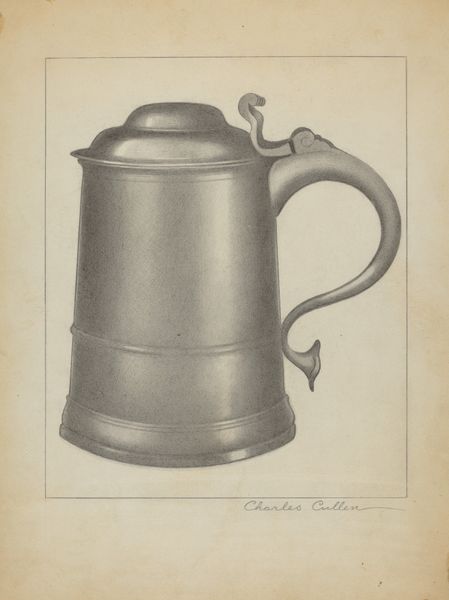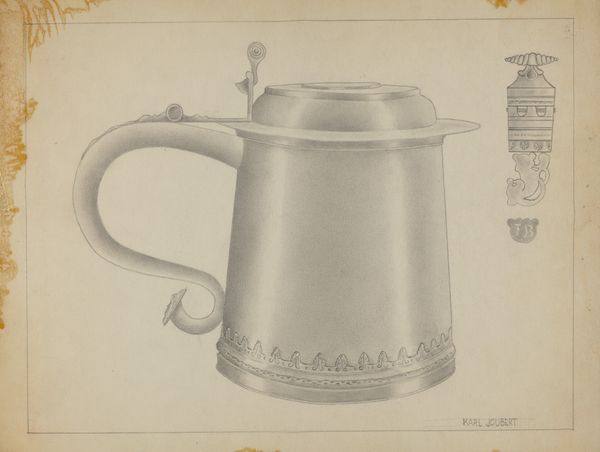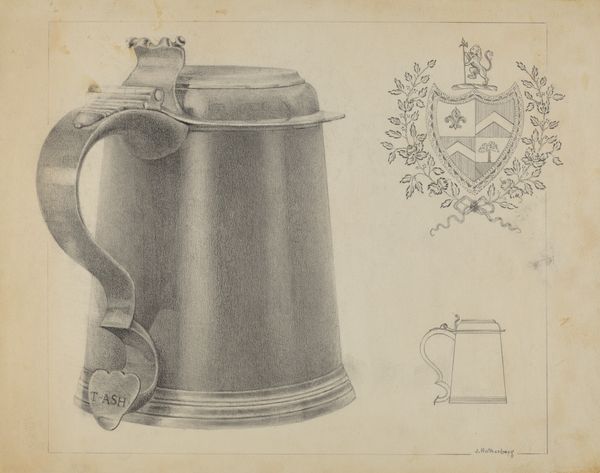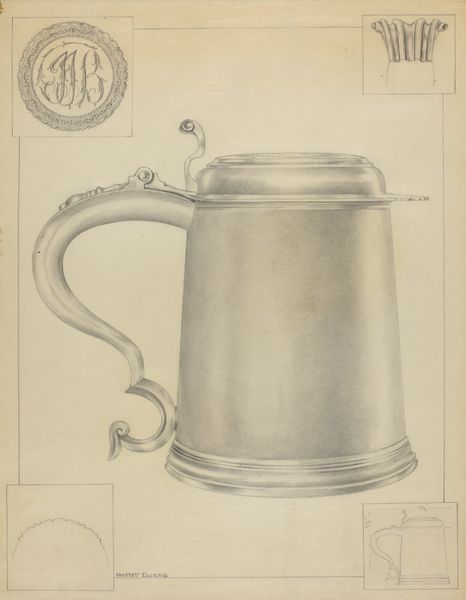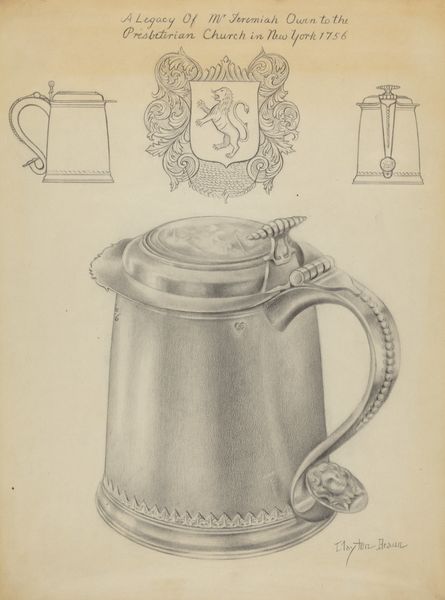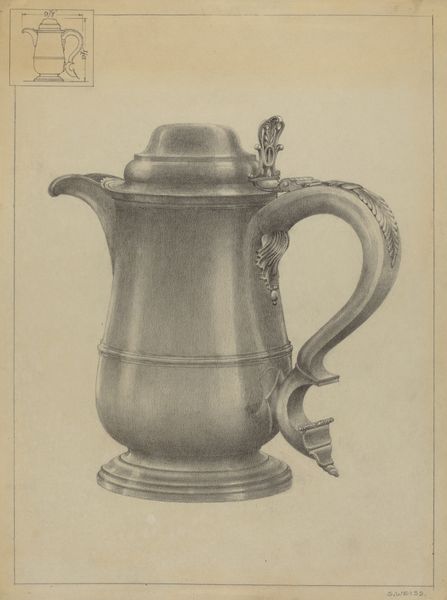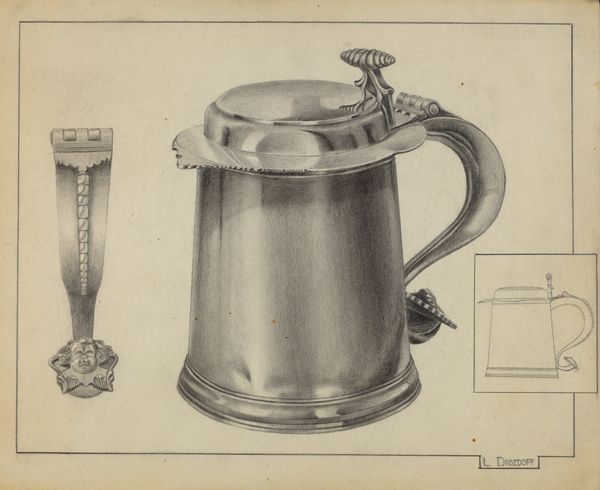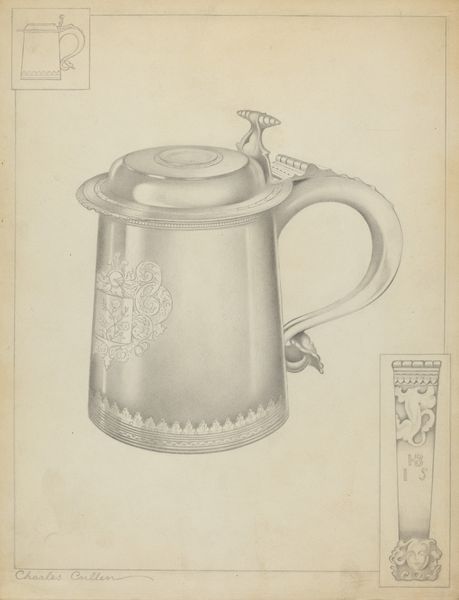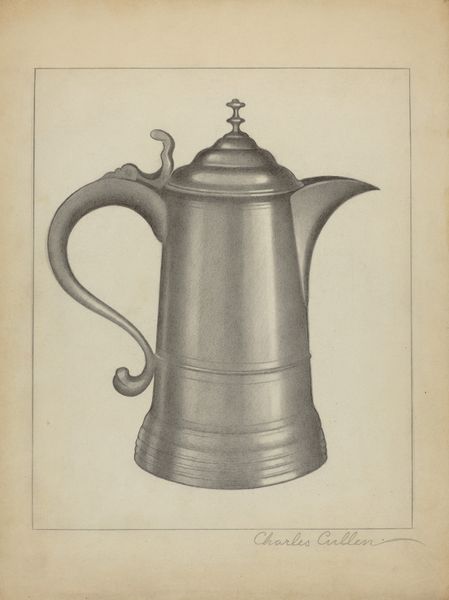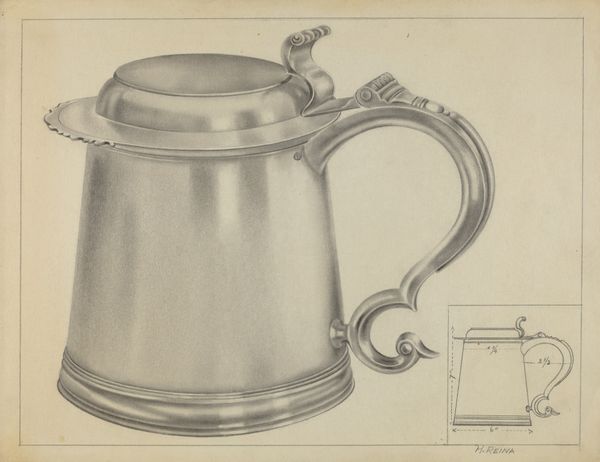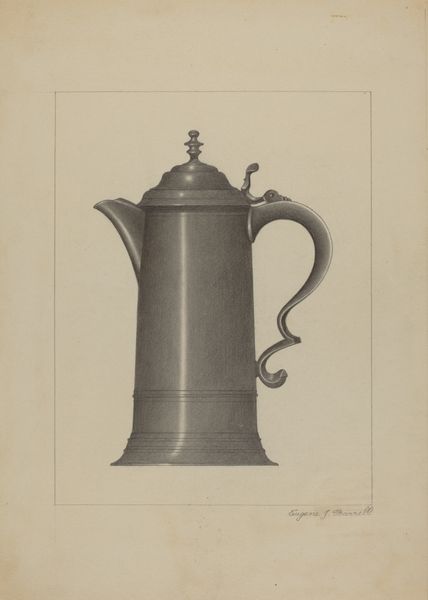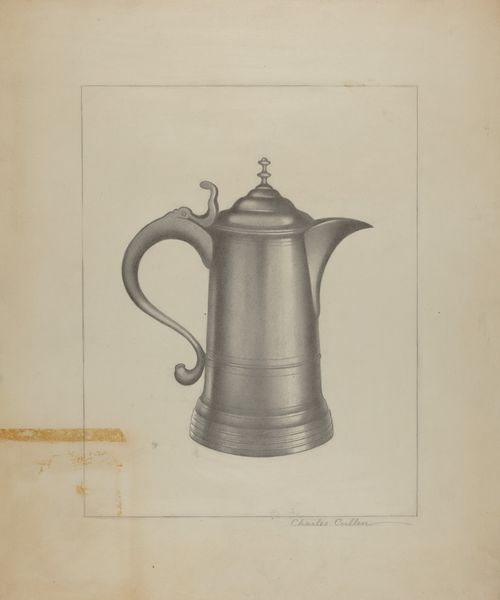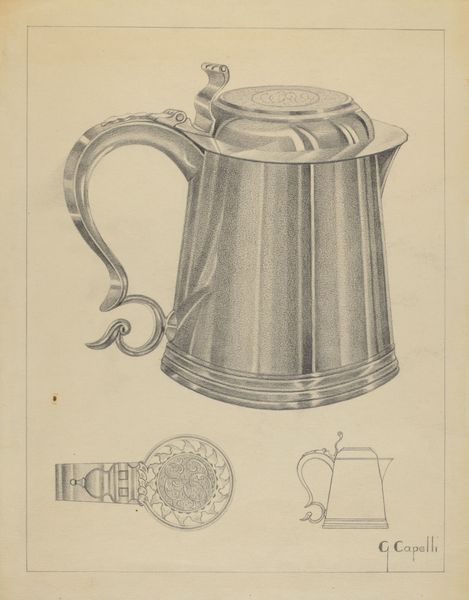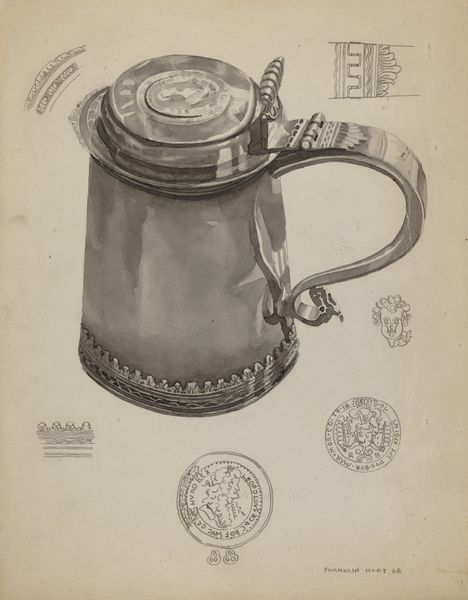
drawing, pencil
#
pencil drawn
#
drawing
#
pencil drawing
#
pencil
#
realism
Dimensions: overall: 23 x 30.4 cm (9 1/16 x 11 15/16 in.) Original IAD Object: 7 1/4" high; 3 13/16" in diameter
Copyright: National Gallery of Art: CC0 1.0
Curator: I'm drawn in by the realism of this pencil drawing, titled "Pewter Tankard" by Charles Cullen, dating from around 1936. What's your initial impression? Editor: The drawing exudes a palpable sense of quietude and simplicity. It almost feels like a working-class still life study in restraint, considering that pewter tankards served everyday needs during this period. Curator: It is striking how an object can evoke a particular time and culture. A pewter tankard such as this holds meaning: it points to community, social ritual, perhaps male spaces where ale and conversation flowed. Look at how its curved handle mimics a dragon, a motif common to this era, referencing ancient power. Editor: Indeed, but the drawing feels intentionally removed from those lively gatherings. The muted gray of the pencil and the lack of vibrant context point to the quiet austerity during the depression era. We should think about those most affected at this time— the poor, working-class individuals unable to engage in pub rituals of drinking. It invites a stark look at economic disparities and access during a challenging period. Curator: I appreciate that contextual counterpoint, because this could easily be seen as romanticizing the common man’s simple pleasure; but it also raises the question of timelessness. Drinking vessels reach far back into history and across cultures— the act of sharing a drink remains fundamentally unchanged. Editor: And what are the roots and traditions represented in the initials carefully embellished beside it? Does the design reflect any particular ethnic or diasporic affiliation, perhaps signaling membership, clan, or lineage? I wonder if the work is prompting conversation around a cultural group absent from art history. Curator: An important element of cultural continuity through symbolic encoding. Such symbols, repeated over time, give objects an added layer of identity that transcends the purely functional. Editor: These types of close readings push us to ask further questions and remember alternative viewpoints. The silent object might hold stories from the past, after all. Curator: Absolutely, it offers endless opportunity for narrative and discovery.
Comments
No comments
Be the first to comment and join the conversation on the ultimate creative platform.
